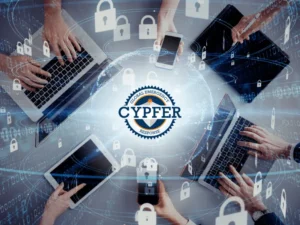In an increasingly digital world, securing sensitive data has become a top priority for organizations and individuals alike. From personal information to financial records, the protection of confidential data is critical to maintaining privacy and trust. Encryption plays a central role in this security landscape, acting as a vital tool in protecting sensitive information from unauthorized access, cyberattacks, and breaches.
But what exactly is encryption, and how does it contribute to data security? In this article, we’ll explore the role encryption plays in securing sensitive data, how it works, and why it is indispensable in today’s interconnected world.
What Is Encryption?
Encryption is the process of converting readable data (plaintext) into an unreadable format (ciphertext) using an algorithm and a key. The goal is to protect the confidentiality of the data while it is stored or transmitted, ensuring that even if unauthorized parties gain access to the data, they cannot read or use it.
There are two primary types of encryption:
- Symmetric encryption: This method uses a single key for both encryption and decryption. The sender and receiver must both possess the key to successfully encrypt and decrypt the data. An example of symmetric encryption is the Advanced Encryption Standard (AES).
- Asymmetric encryption: Also known as public-key encryption, this method uses two keys: a public key (for encryption) and a private key (for decryption). The public key is shared openly, while the private key is kept secret by the recipient. RSA encryption is a popular example of asymmetric encryption.
Why Is Encryption Important for Sensitive Data?
The protection of sensitive data is essential for a variety of reasons, ranging from maintaining individual privacy to ensuring compliance with regulatory requirements. Here’s why encryption is so crucial:
- Protection from Data Breaches: In the event of a data breach or hacking attempt, encryption ensures that even if attackers gain access to your data, they will not be able to decipher it. This is particularly important for organizations that handle large amounts of sensitive data, such as financial institutions, healthcare providers, and e-commerce platforms.
- Safeguarding Personal Privacy: For individuals, encryption protects private information, such as emails, passwords, and financial transactions, from being intercepted and misused by malicious actors.
- Regulatory Compliance: Many industries are subject to stringent regulations that require the encryption of sensitive data. For example, healthcare organizations must comply with the Health Insurance Portability and Accountability Act (HIPAA), which mandates the encryption of patient data. Similarly, the General Data Protection Regulation (GDPR) in Europe requires businesses to protect personal data through measures such as encryption.
- Securing Communications: Encryption ensures that messages and communications, whether they’re sent via email, messaging apps, or even voice calls, remain private and cannot be intercepted or altered during transmission.
How Does Encryption Protect Sensitive Data?
1. Data at Rest
Data at rest refers to data that is stored on a physical device, such as a hard drive, database, or cloud storage. Whether it’s customer data, financial records, or sensitive intellectual property, data at rest is vulnerable to theft if not properly protected.
Encryption plays a crucial role in securing data at rest. By encrypting the data before it’s stored, businesses ensure that even if a physical device is stolen or an unauthorized individual gains access to the system, they will be unable to read the data without the correct decryption key. For example:
- Database Encryption: Many businesses encrypt their entire database or specific sensitive columns within it (such as credit card numbers or Social Security numbers) to prevent unauthorized access.
- File and Disk Encryption: Organizations can encrypt entire disks or files containing sensitive information, so that even if the hardware is stolen, the data remains secure.
2. Data in Transit
Data in transit refers to data that is being transferred between systems, applications, or devices. This data is often transmitted over networks, which can expose it to interception by cybercriminals or hackers.
Encryption plays a vital role in securing data in transit by ensuring that information is scrambled during transmission and can only be read by authorized recipients with the decryption key. For example:
- Secure Sockets Layer (SSL)/Transport Layer Security (TLS): SSL and TLS are encryption protocols commonly used to secure communications over the internet. They protect data exchanged between web browsers and servers, such as when making online purchases or accessing bank accounts.
- Virtual Private Networks (VPNs): VPNs encrypt the internet connection between a user’s device and a private network, ensuring that all data transmitted over the network is secure and protected from eavesdropping.
- End-to-End Encryption: Messaging apps like WhatsApp, Signal, and Telegram use end-to-end encryption to ensure that messages are only readable by the sender and receiver, preventing interception by third parties or unauthorized entities.
3. Authentication and Identity Protection
Encryption is also a crucial component of authentication systems. Authentication is the process of verifying the identity of a user, device, or system before granting access to sensitive data. This is especially important for businesses and organizations that handle sensitive customer data or proprietary information.
Encryption helps secure authentication by ensuring that credentials, such as usernames and passwords, are stored and transmitted securely. For instance:
- Hashing: Instead of storing passwords as plaintext, many systems use a process called hashing to convert passwords into a fixed-length string of characters. These hashes are encrypted so that even if an attacker gains access to the database, they cannot retrieve the original password.
- Two-Factor Authentication (2FA): Many services now require users to provide two forms of identification (such as a password and a code sent to their phone) before granting access. This extra layer of security ensures that even if an attacker acquires the password, they cannot access the account without the second factor.
4. Preventing Data Tampering
Data tampering occurs when attackers alter or manipulate data in order to deceive users or organizations. Encryption can help prevent data tampering by ensuring the integrity of data. When data is encrypted, it is essentially “sealed,” making it difficult for hackers to alter the contents without breaking the encryption.
For example:
- Digital Signatures: Digital signatures use encryption to verify the authenticity and integrity of data. When a document or transaction is digitally signed, it guarantees that the content hasn’t been tampered with, and it can be verified by anyone with the proper public key.
- Message Integrity Checks: Many encryption algorithms include mechanisms for checking the integrity of data. This ensures that data hasn’t been altered in transit and that it remains intact when it reaches the intended recipient.
5. Protecting Cloud Data
With the increasing adoption of cloud computing, securing data stored in the cloud has become a critical concern. Cloud providers offer encryption as a standard feature, but it’s essential for businesses to understand how encryption protects data in this context.
Cloud encryption involves encrypting data both at rest and in transit to ensure that information is protected throughout its lifecycle. In some cases, businesses may also choose to encrypt data on their own before uploading it to the cloud, adding an additional layer of security.
Why Encryption Alone Isn’t Enough
While encryption is a powerful tool for securing sensitive data, it’s important to note that it’s not a complete security solution on its own. To fully protect sensitive data, encryption should be part of a broader cybersecurity strategy that includes:
- Access Controls: Only authorized individuals should have access to sensitive data, and encryption keys should be stored securely to prevent unauthorized decryption.
- Regular Security Audits: Ongoing monitoring and auditing of your data security practices can help identify vulnerabilities and weaknesses in your encryption protocols.
- Data Backup: Regular backups are essential to ensure that data can be restored in the event of a breach or disaster. It’s important to ensure that encrypted backups are stored securely as well.
Conclusion
Encryption is an essential tool for securing sensitive data, providing robust protection for both data at rest and data in transit. It ensures that even if data is intercepted or accessed by unauthorized individuals, it remains unreadable and secure. By leveraging encryption, businesses can protect personal privacy, comply with regulatory requirements, and safeguard sensitive information from cyber threats and breaches.
However, while encryption plays a central role in data security, it should be part of a comprehensive approach to cybersecurity that includes access controls, monitoring, and regular audits. With the increasing importance of data privacy and the rise of cyber threats, encryption is more critical than ever in ensuring the integrity and confidentiality of sensitive data in the digital age.




